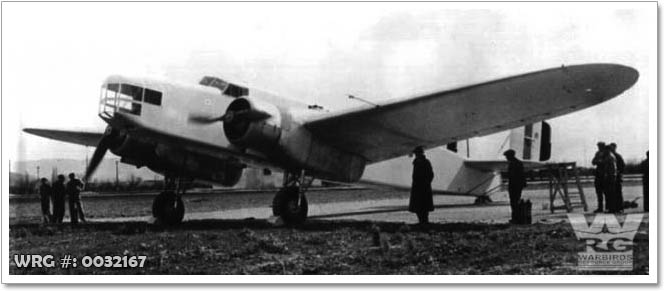REGIA AERONAUTICA ITALIANA > EXPERIMENTAL > PREVIOUS PAGE
CANT Z.1011
The twin-engined CANT Z.1011 was one of two bombers of about the same size and powered by the same engines, designed by Filippo Zappata in the mid-1930s. The other was the three-engined CANT Z.1007, which in the end was the type preferred by the Regia Aeronautica.

CANT Z.1011
[Source: Unknown/Public Domain]
The CANT Z.1011 was a low wing cantilever monoplane with a wooden structure. The wings had three wooden spars, spruce and plywood ribs and plywood covering. The whole trailing edge was occupied by ailerons and inboard flaps. The fuselage was flat sided with plywood covering. The tailplane, placed on top of the fuselage, was braced to it with pairs of parallel struts and carried twin fins and rudders. The fins were braced to the tailplane by further pairs of struts on their inner sides. The fixed tail surfaces were again plywood covered but the control surfaces were covered in fabric. The engines were conventionally wing mounted and the main legs and wheels of the tailwheel undercarriage retracted rearwards into cowling extensions behind them. Mainwheels were fitted with brakes.
The enclosed pilots' compartment was over the leading edge of the wing, with a bomb-aimer's position in the nose. There were dorsal and ventral gunner's positions respectively over and aft of the wing, each equipped with twin machine guns.
The Z.1011 made its first flight on 2 March 1936 powered by 710 kW (950 hp) Gnome-Rhône Mistral Major RC radial engines, but these were soon replaced with 610 kW (820 hp) V-12 Isotta-Fraschini Asso XI.RCs. Five Z.1011 prototypes were built before the Regia Aeronautica chose to order the three-engined Z.1007. After that decision the Z.1011 was used as a transport.
Source:
WikiPedia
REGIA AERONAUTICA ITALIANA > EXPERIMENTAL > PREVIOUS PAGE

